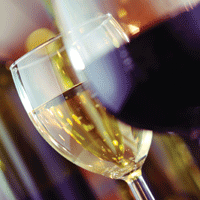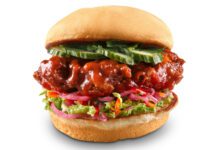Canadian wines continue to show great growth in restaurants
Canadian restaurateurs have cottoned on to quality regional wines, adding more local menu listings than ever before.
Part of this trend is in response to the major Go Local, 100-mile-diet movements across the country. “People really want to learn about the local wine and food,” says Paul Speck, president of Henry of Pelham Family Estate Winery in Niagara, Ont.
Speck suspects the surge in popularity of domestic wines is fuelled by younger buyers, servers, chefs and restaurant owners who only know quality local wines; they don’t remember when Canadian varieties were mainly hybrid grape, low-grade plonk. Speck believes our long and sustained period of producing quality wines at many local wineries has propelled Canadian vino into the spotlight.
According to Will Predhomme, senior sommelier at Toronto’s Canoe Restaurant, the movement towards small lot, artisanal releases from Canada really took off about four years ago. It’s allowed him to maintain 30-per-cent Canadian content on Canoe’s wine list. “I’m listing incredibly high-end, micro-produced, Canadian wines, which I can confidently put up against international wines at the same price level.” His sweet zone for selling local wine is $80 to $120, and he searches out small lot, limited releases.
“If a customer can find it on the LCBO shelves, why put it on my list at three times the mark-up?”
Joseph Cassidy, sommelier at Via Allegro Ristorante in Toronto, lists about 450 Canadian labels, and sales are up. “People are educated. We don’t have to tell them what VQA [Vintners Quality Alliance] means. Now they want quality, and they’re prepared to pay.” In fact, he has customers asking for organic and biodynamic wines. “They’re the same people who ask what farm the meat is from and if it was raised organically. People are trying to go green and local.”
And, owners at tourist-friendly restaurants note a Canadian wine sales spike at times when more of their customers are from out-of-town. Tourists want a local experience today. In the ’80s and ’90s they were less interested in the local food and wine experience — now it’s expected. “Our licensee sales are growing double-digit and have been for five years,” says Tom Pennachetti, vice-president, Marketing and Sales at Cave Spring Winery in Niagara.
Jay Whiteley, assistant wine director at Hawksworth Restaurant in Vancouver, remembers working in Whistler where he changed the wine lists from 20- per-cent to almost 90-per-cent local due to demand.
When it comes to the wine purchases at Hawksworth, he concentrates on the smaller, handcraft style wineries such as Tantalus, Laughing Stock, Nichol Vineyard and Poplar Grove.
Ontario’s 2010 list of “VQA Award of Excellence” winners names literally hundreds of restaurants in Ontario that offer an excellent selection of local wines, including about 55 whose lists are at least 75-per-cent Ontario-made. The B.C. Wine Institute doesn’t have an official wine awards list for restaurants yet, but it is currently examining the notion in partnership with the B.C. Food and Restaurant Association. “Licensees have historically been very supportive of the B.C. wine industry,” says Miles Prodan, executive director of the B.C. Wine Institute. “That’s what got consumers interested in B.C. wine here.”
Either way, all the signs are pointing up for Canadian wines in restaurants.
More in Feature Articles
Kicking it Up a Notch: How to Add a Modern Twist to Traditional Italian Food
The Elephant in the Room – Ventilation and Exhaust Systems
Making it Big: Extreme Brandz Takes the Lead
A League of Their Own: MLSE Scores Big
The C Factor: Chef Clark Champions the Canadian Seafood Industry
Hot Spot: Profiling Vancouver’s White Spot Resto
House Rules: Profiling Paul Rogalski and Olivier Reynaud of Rouge
Russo Rising: Profiling Chef Russo





















